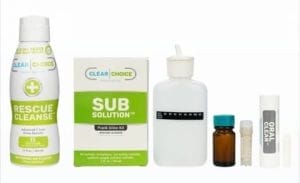Fremont County School District 1 has refined its student drug testing policy following a year of implementation, making key adjustments to improve efficiency while retaining its original goals.
At a recent board meeting, trustees approved revisions to Policy JI-CHA-R after evaluating year-end data, community feedback, and operational challenges.
Introduced in August 2023 by Board Chair Jared Kail, Policy JICHA was born out of concerns over a rise in student drug violations, particularly those involving vape pens and pills that are tough to detect.
The policy mandated drug tests for all middle and high school students participating in extracurricular activities, with 100% screening at the start of each season and random testing for 25% of participants throughout the year.
From the start, the policy was met with some resistance. Parents and staff voiced concerns about the costs, strict penalties, loss of classroom time, and the inclusion of younger students.
At the time, Superintendent Mike Harris highlighted that few Wyoming districts had similar policies, and even fewer tested middle school students.
By the end of the 2024-25 school year, the district had conducted 1,514 tests at a cost of $46,934. Of those, only seven tests returned positive results—0.46% of the total—showing the policy’s low detection rate.
While Kail considered this a positive outcome, the low number of positives prompted the board to reassess the policy’s effectiveness and expenses.
“We might find ways to improve it,” said Trustee Taylor Jacobs, a supporter of the original policy. Trustee Mara Gans, a former opponent, saw the potential for cost savings, suggesting those funds could be better allocated to underfunded extracurriculars, like music or girls’ softball.
The approved revisions reflect a more balanced approach. Notably, sixth-graders will no longer undergo drug testing, though students in grades 7-12 remain eligible.
The mandatory 100% screenings at the start of each season will be eliminated to reduce classroom absences and lighten staff workload.
Random testing will continue during activity seasons for 25% of participants and extend to out-of-season students, with 10% selected for testing each month.
Additionally, the policy now clarifies that students who drop out or are removed from all extracurriculars will automatically be removed from the testing pool, with no parent request required.
However, parents can still opt their children into the testing pool even if they aren’t involved in activities.
The updates also expand the list of substances students can be tested for and include a range of testing methods, including saliva, urine, hair, and breath.
Students who test positive will be suspended from competitions, and appeals will leave them ineligible until resolved. As before, testing records will remain confidential and destroyed one year after graduation.
While concerns about hidden costs remain, particularly the impact on instructional time and staff workload, the revisions are expected to reduce expenses without compromising the program’s “positive incentive,” according to Kail.
Looking back at the first year, Trustee Scott Jensen expressed his support for the policy, noting that “five families now know their child has a drug problem and can get help. That alone makes the program worth continuing and fine-tuning.”
You May Also Like: Whistleblower Claims Scott County Judge Ignored Employee’s Positive Drug Test

